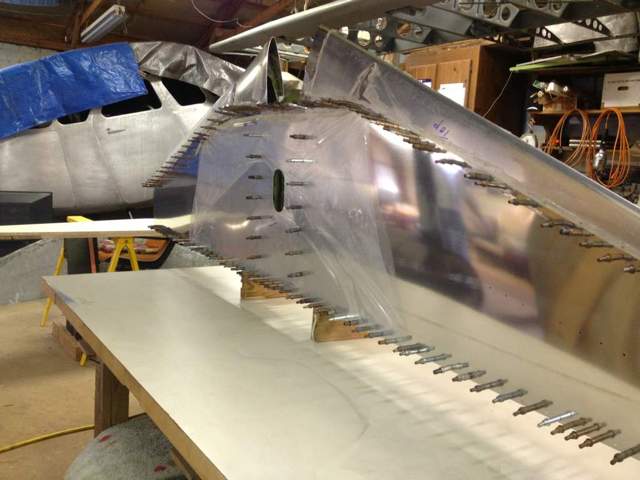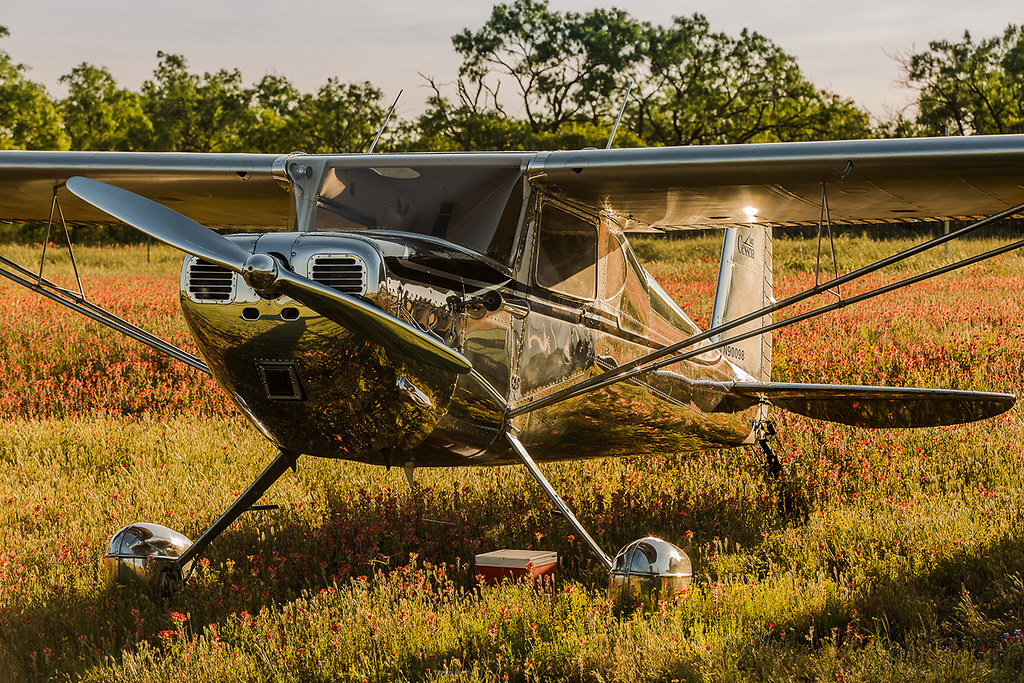Deb, you mention polishing the Luscombe once a year and it is parked outside, did I read that correctly? Also, you described it as not much different from waxing, which I would be doing anyway if I painted it. Do you do anything to it in between? The guy I spoke to at a local paint shop was making it sound like a constant miserable experience - like I would be spending more time polishing than flying. Obviously, he was biased and trying to sell a full paint job.
Yep. Lester is outside. One of the pictures I posted above shows him in the snow (and still shiny). I polish once a year. I use Grade S Nuvite (final polish) and a $19.95 handheld (small 4in) orbital polisher from AutoZone with microfiber bonnets. I own about 20 bonnets as I change them often.
First, for those whining about polishing, there are actually two processes to a polished beauty. Most of the whining comes from the first process, compounding. Compounding is more difficult because the compounder is heavier (at least to me). Compounding prepares the surface to accept the polish. It smooths out scratches and imperfections for the surface. You may use various grades of Nuvite during compounding based on the problem. If there is heavy corrosion, I use Nuvite 9. For general chemical stain and overall compounding, I use Nuvite 7.
Compounding under the wings is a *****. I recommend a nice metallic silver under the wings and under the horizontal stabilizer and elevators.
The surface may need several applications. The more you work the surface with the compounder and the material, the better the look and the shine. After compounding, the surface with be shiny, but the material leaves swirls in the surface. That is where the final polish (Grade S) comes into play. This finish removes those swirls and leaves the surface with a mirror finish. If you use the Cyclo as recommended, you will get wonderful results. I am nearly fifty, short and overweight with a weak elbow. The little orbital polisher works great for me because I go over the surface several times with no stress to my body parts.
Once the airplane is compounded, there is no reason to do it again unless it has been neglected for some time. I just polish now, and each time I polish the finish gets better and lasts longer. In between, I wipe down bugs, oil and dirt with NuImage, Nuvite's cleaner for polished surfaces. I get chemical stains on the surface under my cover. If not for that, I wouldn't have to polish as often as I do. The NuImage cleaner costs no more that Meguirs Cleaner Wax.
Some folks worry about damaging the surface of these vintage airplanes with polish. Most metal airplanes of this era, including all Luscombes, came from the factory polished. Paint is a modern addition. Also, when folks speak of the horrors of polishing, they are remembering the cornstarch and flour days (I've had a few of those myself).
Go to
www.perfectpolish.com , read their polishing guide and order their sample kit. This allows you to try the process without getting too much invested. The polish may seem expensive, but a can of Grade S will polish an airplane a couple of times. Another great site about polishing is the Swift website (
www.saginawwings.com). These folks take their polish seriously!
Another note, my Lester, God bless him, is a dog. He has 63 years of hangar rash, hail damage and being on the losing end of some bad crosswinds. But when we pull up to park at fly-ins, nobody notices his flaws. It's all about the shine, and I'm working on getting that perfected.
Deb







 Go for it! I'm a granny, and I stripped and polished my Luscombe. The best source for information is perfectpolish.com and nuvite.com. It's work, especially compounding the surface to get it ready to accept the polish, but after that, I only polish yearly. My Luscombe is parked outside.
Go for it! I'm a granny, and I stripped and polished my Luscombe. The best source for information is perfectpolish.com and nuvite.com. It's work, especially compounding the surface to get it ready to accept the polish, but after that, I only polish yearly. My Luscombe is parked outside. 







